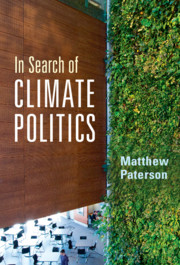82 results
On the horizon: The futures of IR
-
- Journal:
- Review of International Studies / Volume 50 / Issue 3 / May 2024
- Published online by Cambridge University Press:
- 06 May 2024, pp. 415-424
- Print publication:
- May 2024
-
- Article
-
- You have access
- HTML
- Export citation
Head and Neck Cancer: United Kingdom National Multidisciplinary Guidelines, Sixth Edition
-
- Journal:
- The Journal of Laryngology & Otology / Volume 138 / Issue S1 / April 2024
- Published online by Cambridge University Press:
- 14 March 2024, pp. S1-S224
- Print publication:
- April 2024
-
- Article
-
- You have access
- Open access
- HTML
- Export citation
Editorial
-
- Journal:
- Review of International Studies / Volume 49 / Issue 5 / December 2023
- Published online by Cambridge University Press:
- 04 December 2023, pp. 781-782
- Print publication:
- December 2023
-
- Article
-
- You have access
- HTML
- Export citation
12 - Networks
- from Part III - Collecting and Analysing Data
-
-
- Book:
- Conducting Research on Global Environmental Agreement-Making
- Published online:
- 07 August 2023
- Print publication:
- 10 August 2023, pp 228-246
-
- Chapter
- Export citation
Where Is the Key? Unlocking Ecological-Political Transformations
-
- Journal:
- Perspectives on Politics / Volume 20 / Issue 3 / September 2022
- Published online by Cambridge University Press:
- 31 August 2022, pp. 1048-1052
- Print publication:
- September 2022
-
- Article
- Export citation
3 - Making Climate Policy in the City of Ottawa
-
-
- Book:
- In Search of Climate Politics
- Published online:
- 02 November 2021
- Print publication:
- 26 August 2021, pp 30-45
-
- Chapter
- Export citation
References
-
- Book:
- In Search of Climate Politics
- Published online:
- 02 November 2021
- Print publication:
- 26 August 2021, pp 161-179
-
- Chapter
- Export citation
4 - Networked Governance and Carbon Accounting in Ottawa
-
-
- Book:
- In Search of Climate Politics
- Published online:
- 02 November 2021
- Print publication:
- 26 August 2021, pp 46-57
-
- Chapter
- Export citation
2 - In Search of Climate Politics
-
- Book:
- In Search of Climate Politics
- Published online:
- 02 November 2021
- Print publication:
- 26 August 2021, pp 14-29
-
- Chapter
- Export citation

In Search of Climate Politics
-
- Published online:
- 02 November 2021
- Print publication:
- 26 August 2021
Copyright page
-
- Book:
- In Search of Climate Politics
- Published online:
- 02 November 2021
- Print publication:
- 26 August 2021, pp iv-iv
-
- Chapter
- Export citation
1 - Introduction
-
- Book:
- In Search of Climate Politics
- Published online:
- 02 November 2021
- Print publication:
- 26 August 2021, pp 1-13
-
- Chapter
- Export citation
10 - Conclusions
-
- Book:
- In Search of Climate Politics
- Published online:
- 02 November 2021
- Print publication:
- 26 August 2021, pp 145-160
-
- Chapter
- Export citation
Acknowledgements
-
- Book:
- In Search of Climate Politics
- Published online:
- 02 November 2021
- Print publication:
- 26 August 2021, pp xii-xiv
-
- Chapter
- Export citation
9 - Renewing Democratic Politics
-
-
- Book:
- In Search of Climate Politics
- Published online:
- 02 November 2021
- Print publication:
- 26 August 2021, pp 126-144
-
- Chapter
- Export citation
Index
-
- Book:
- In Search of Climate Politics
- Published online:
- 02 November 2021
- Print publication:
- 26 August 2021, pp 180-182
-
- Chapter
- Export citation
Contents
-
- Book:
- In Search of Climate Politics
- Published online:
- 02 November 2021
- Print publication:
- 26 August 2021, pp v-vi
-
- Chapter
- Export citation
Figures and Tables
-
- Book:
- In Search of Climate Politics
- Published online:
- 02 November 2021
- Print publication:
- 26 August 2021, pp vii-viii
-
- Chapter
- Export citation
7 - Mapping Climate Experimentation in Ottawa
-
-
- Book:
- In Search of Climate Politics
- Published online:
- 02 November 2021
- Print publication:
- 26 August 2021, pp 97-111
-
- Chapter
- Export citation
6 - Intensifying Conflicts
-
-
- Book:
- In Search of Climate Politics
- Published online:
- 02 November 2021
- Print publication:
- 26 August 2021, pp 78-96
-
- Chapter
- Export citation



